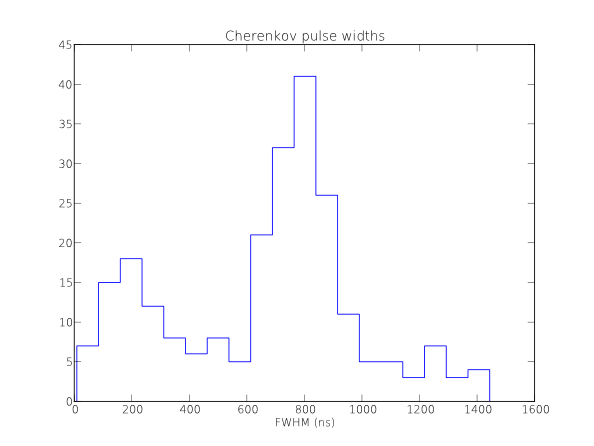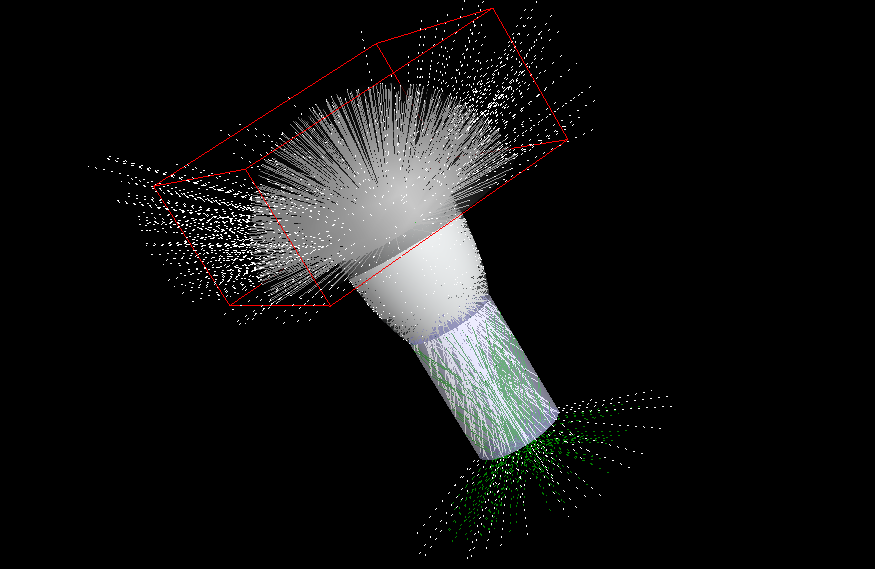Summary
The principle motivation for the CHaTTER detector is to provide an additional channel for air shower observations with the goal of further constraining key parameters such as Xmax which is ultimately used in shower reconstruction to infer primary composition.
We've tested a prototype design that was triggered by a simple four-fold muon detector system, and time tagged using our portable CWRU "time machine." During this test, the prototype was co-located between an Auger north doublet and a third Auger north station roughly 1.5 km away. This allowed us to directly compare Cherenkov traces from the prototype to traces observed by the three stations.

In the near future we hope to build a fully integrated system that uses a more efficient optical collector, and accepts an external trigger from other systems via Ethernet or RS232 protocols.
Optics
To collect atmospheric Cherenkov light we'll employ a non-imaging conical parabolic concentrator (CPC), sometimes referred to as a Winston cone. This is connected to a glass or acrylic light pipe which sits on top of the PMT photocathod. This prevents the CPC inheriting the high voltage associated with the cathode during operation.
